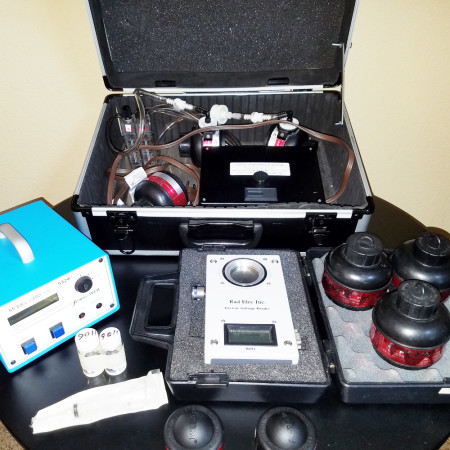Radon – The Odorless Killer
Radon Facts: The U.S. Environmental Protection Agency (US EPA) and the Surgeon General’s Office have estimated that as many as 20,000 lung cancer deaths are caused each year by radon. Radon is the second leading cause of lung cancer. According to the US EPA, nearly 1 in 3 homes checked in seven states and on three reservations had screening levels over 4 pCi/L, which is the EPA’s recommended action level for radon exposure. Most scientists agree that the risk of death for radon at 4 pCi/L is approximately 1 in 100. At the 4 pCi/L EPA action guideline level, radon carries approximately 1000 times the risk of death as any other EPA carcinogen. It is important to note that the action level is not a safe level, as there are no “safe” levels of radon gas.
What is radon? Radon is a cancer-causing radioactive gas. You cannot see, smell or taste radon, but it may be a problem in your home. The Surgeon General has warned that radon is the second leading cause of lung cancer in the United States today. If you smoke and your home has high radon levels, you’re at high risk for developing lung cancer. Some scientific studies of radon exposure indicate that children may be more sensitive to radon. This may be due to their higher respiration rate and their rapidly dividing cells, which may be more vulnerable to radiation damage.
EXPOSURE: The primary routes of potential human exposure to radon are inhalation and ingestion. Radon in the ground, groundwater, or building materials enters working and living spaces and disintegrates into its decay products. Although high concentrations of radon in groundwater may contribute to radon exposure through ingestion, the inhalation of radon released from water is usually more important.
Should you test for radon? YES. Testing is the only way to know your home’s radon levels. There are no immediate symptoms that will alert you to the presence of radon. It typically takes years of exposure before any problems surface. The US EPA, Surgeon General, American Lung Association, American Medical Association, and National Safety Council recommend testing your home for radon because testing is the only way to know your home’s radon levels. Radon is a national environmental health problem. Elevated radon levels have been discovered in every state. The US EPA estimates that as many as 8 million homes throughout the country have elevated levels of radon. Current state surveys show that 1 home in 5 has elevated radon levels.
Can you fix the problem? If your home has high concentrations of radon there are ways to reduce it to acceptable levels. Most radon problems can be fixed by first having a radon test by a professional. Then you may wish to look at the list of certified radon mitigators for your state.




